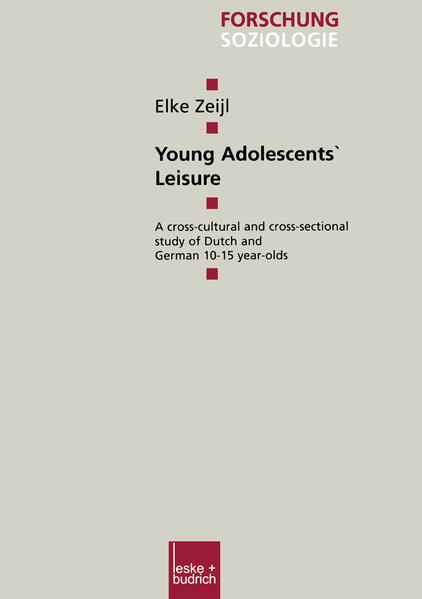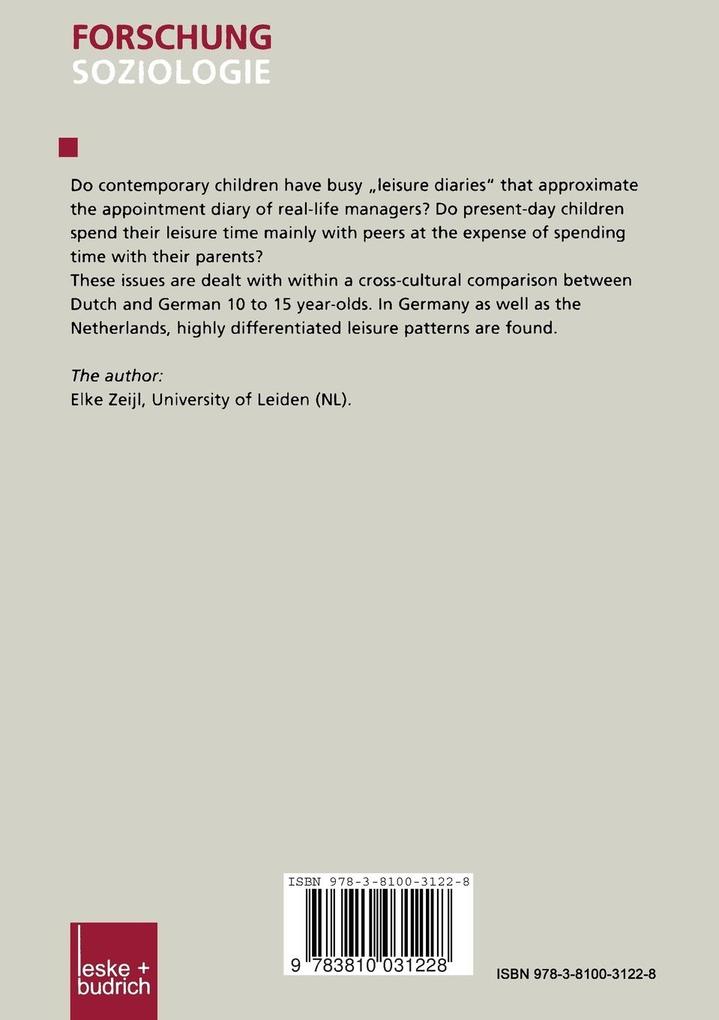Do contemporary children have busy "leisure-diaries" that approximate the appointment diary of real-life managers? Do present-day children spend their leisure time mainly with peers at the expense of spending time with their parents? These issues are dealt with within a cross-cultural comparison between Dutch and German 10 to 15 year-olds. In Germany as well as the Netherlands, highly differentiated leisure patterns are found.
Inhaltsverzeichnis
List of Contents. - 1: Young adolescents and their leisure. - 1. 1 Introduction. - 1. 2 Position of the present study within contemporary discourses on childhood and youth. - 1. 3 Contemporary sociological debates on the leisure of young adolescents. - 1. 4 Research questions and research context. - 1. 5 The structure of the present study. - 2: Method. - 2. 1 Introduction. - 2. 2 Cross-cultural research. - 2. 3 Cross-sectional age research. - 2. 4 The survey. - 2. 5 Translation issues. - 2. 6 Sample and administration procedure. - 2. 7 Methods of analyses. - 2. 8 Conclusion. - 3: The leisure patterns of young adolescents. - 3. 1 Introduction. - 3. 2 Leisure research in the Netherlands: A bird s-eye view. - 3. 3 The German parallel study. - 3. 4 Research questions and expectations. - 3. 5 Results. - 3. 6 Discussion and cross-cultural comparison. - Appendix to chapter 3. - 4: The role of parents and peers in the leisure activities of young adolescents. - 4. 1 Introduction. - 4. 2 Theoretical approaches in leisure and peer studies. - 4. 3 Research questions and expectations. - 4. 4 Results. - 4. 5 Discussion and cross-cultural comparison. - Appendix to chapter 4. - 5: Parent-child relationships in early adolescence. - 5. 1 Introduction. - 5. 2 Empirical research on the parent-child relationship in the Netherlands. - 5. 3 The German parallel study. - 5. 4 Research questions and expectations. - 5. 5 Results. - 5. 6 Discussion. - Appendix to chapter 5: Dutch and German component loadings. - 6: Discussion and conclusions. - 6. 1 Introduction. - 6. 2 Theoretical gain and pedagogical relevance of the present study. - 6. 3 Recommendations for future research. - References.














